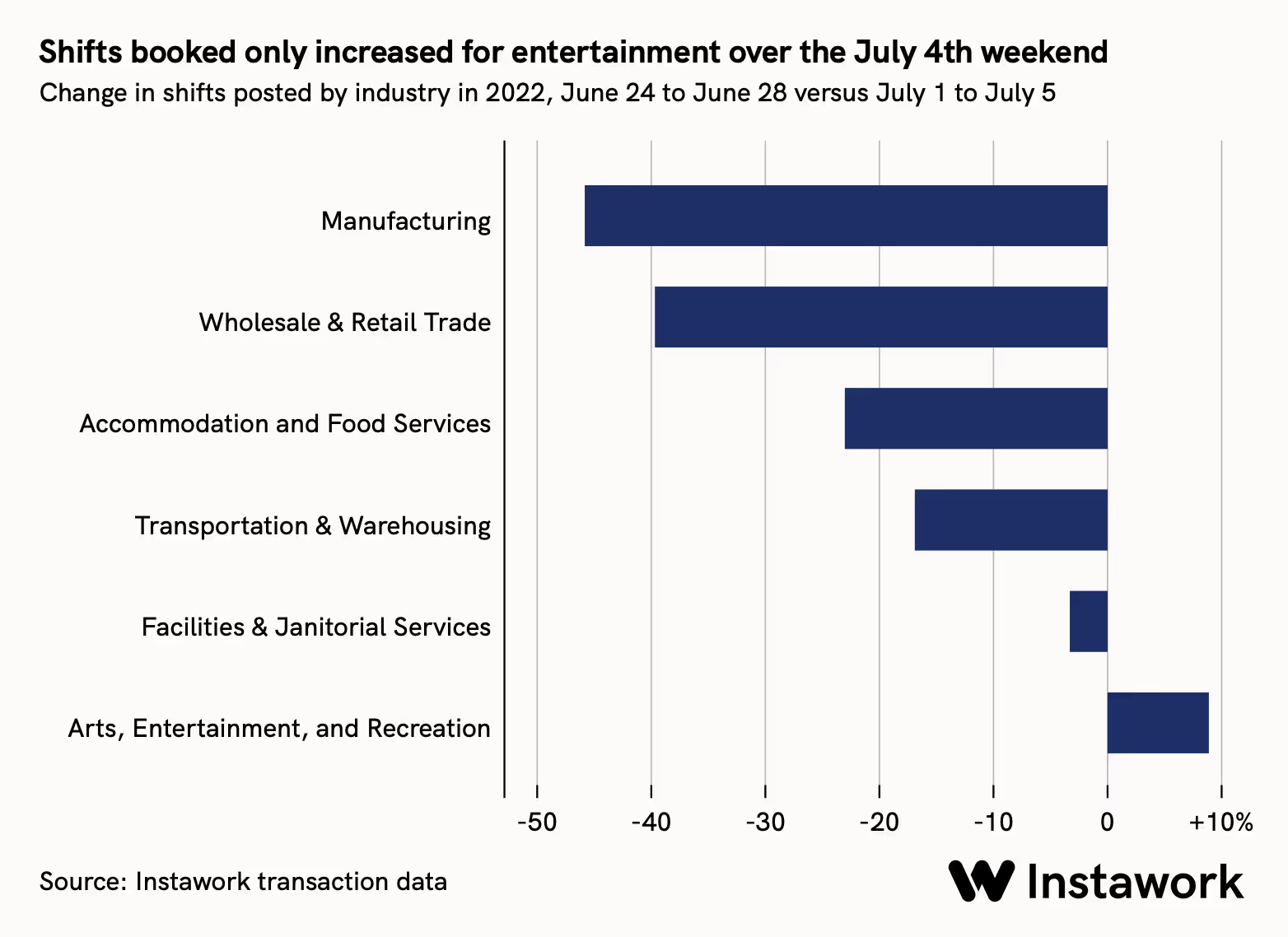Find Workers
⌄


A July 4th long weekend is usually a time to celebrate and have fun. Plenty of workplaces close, but of course quite a few people still have to go to work. This year, with July 4th falling on a Tuesday, some long weekends extended to four days. Did that mean people worked less?
To find out, we can compare what happened this year with what happened in 2022, when July 4th was a Monday. And the overall picture over the holiday weekend is interesting, too, as businesses vary their use of flexible work. For more information on staffing solutions, check out Temp Staffing and Workers in South Gate | Instawork.
The demand for flexible work drops over the July 4th weekend in many industries as operations close down for a midsummer break. Also, people who travel are often going to spend time with family, so there's not necessarily a big bump in hospitality. But a few businesses in entertainment and recreation may still be going strong as they take part in the festivities.
To see how much the use of flexible work changes, we can compare the Friday-to-Tuesday period including July 4th with the same five days a week earlier. In 2022, the number of shifts posted on our platform dropped by 19% in 7 of the most common self-employment tax questions, answered.
To see how much the use of flexible work changes, we can compare the Friday-to-Tuesday period including July 4th with the same five days a week earlier. In 2022, the number of shifts posted on our platform dropped by 19% in the latter period among businesses that posted shifts in both periods:

Shifts in manufacturing were down by more than 40%, and wholesale and retail trade were also much slower. But shifts in arts, entertainment, and recreation rose by 9%.
Something similar happened in 2023, but it wasn't exactly the same story:

Demand for flexible labor softened by even more over the July 4th period in 2023 than it had in 2022 - 22% overall as opposed to 19%. Even the boost in bookings for shifts in arts, entertainment, and recreation almost disappeared. That extra potential day of vacation seems like it did indeed make a difference - and we might see it showing up in statistics on the macroeconomy as well.
We can reveal even more about the changes in the labor market during the July 4th weekend by looking at hourly pay. In 2022, hourly pay rose for almost all of the most popular roles during the July 4th weekend:

The roles that were most in demand generally came with a premium in additional pay for work during the holiday. But that wasn't the case in 2023:

A few of the most popular roles still saw small increases in hourly pay, but an equal number saw decreases. This may have been a result of the relatively lower demand, as shown above.
The mixed changes in pay also speak to the enormous and growing supply of labor for flexible work. We are now nearing 5 million Pros signed up on our platform, whereas in July 2022 we had only 3 million. Our Pros are working more hours, too, as flexible work becomes a more popular option out of preference or necessity. People want to work - and need to work - whether it's a holiday or not.
These metrics, derived from data aggregated across the Instawork platform, compare the two weeks starting 6/29/2023 to the previous two weeks. To control for the overall growth of the Instawork marketplace, only shifts involving businesses that booked shifts in both periods are included:
To receive future briefings and data insights from our Economic Research team, please subscribe below. Follow Daniel Altman on Twitter at @AltmanEcon or on LinkedIn.